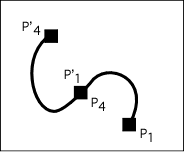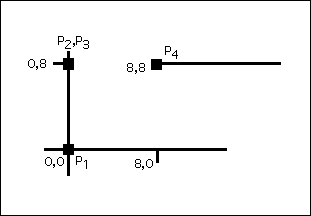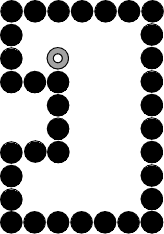
| CENTER SEAT EXAM |
This is a closed-book, closed-notes, no-calculators exam. Exam given, Wednesday, July 31st. Write all answers in your exam book. Do not turn in this question sheet. You should keep it and bring it with you when I go over the exam in class.
| 1. For the curve to the right, made up of two cubic Bézier curves, draw the control points P2, P3, P'2 and P'3, arranged in such a way that the curve directions at P1 and P'4 are correct and their is no discontinuity in the curve slopes at the meeting point P4, P'1. |  |
2. In the diagram below, a Bézier curve is to be drawn from P1 to P4 using control points P2 and P3 which are both located at 0,8.
Use the cubic Bézier formula for the curve:
Q(t) = (1 - t)3 P1 + 3t(1 - t)2 P2 + 3t2(1 - t) P3 + t3 P4
and apply it to the following figure. In particular, compute the x,y coordinates of the point on the curve at t = 1/2. By symmetry, this point should lie along the line from 0,8 to 8,0. Does it? Describe the convex hull of the four control points. Is the point you computed within this hull?

3. A point P has x,y location 5√2, 5√2 (x and y both 5 x sqrt(2)), so it is a distance 10 from the origin. Using 3x3 transformations in homogeneous coordinates for two dimensions, do the following:
| 4. For the irregular region shown to the right, show the steps in the recursive boundary-fill algorithm until the entire region is filled. You might find it convenient to keep track of the stack, or you could simply rely on your numbering of the stacked pixels to keep the order of the fill straight. | 
|
5. This question involves only 2x2 matrices, not ones using homogeneous coordinates.